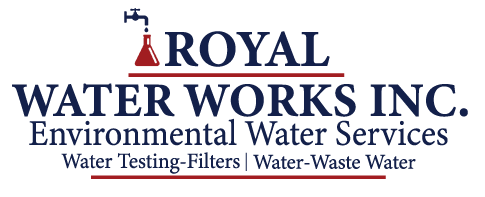
Seasonal Water Changes in Pisgah Forest: Why Testing Every Quarter Matters
Pisgah Forest, NC is known for its lush landscapes, flowing streams, and mountain-fed aquifers that support homes and communities. Yet beneath its natural beauty, the groundwater system is constantly changing. Seasonal shifts in rainfall, temperature, and environmental conditions directly affect wells and the water they provide. For residents who rely on private wells, this means water quality is not static. It varies with the seasons, sometimes subtly, and other times dramatically.
The mountains and valleys around Pisgah Forest create natural pathways where rainwater filters into underground reservoirs. These aquifers are often clean, but they are also sensitive to outside influences. A rainy spring can introduce runoff containing fertilizers or natural debris into the groundwater. A dry summer can concentrate minerals like iron, manganese, or calcium, leaving water harder and more metallic in taste. In autumn, leaf litter and decaying organic matter may affect pH balance and clarity. Winter brings its own challenges, with melting snow and ice increasing the potential for bacterial changes in well water.
Because Pisgah Forest residents live in a region where weather and topography combine to produce constant water changes, quarterly water testing is more than a precaution. It is a safeguard for families, a way to stay ahead of problems before they compromise health or damage plumbing systems. This seasonal cycle makes it clear that a yearly test simply does not capture the dynamic nature of local groundwater.
The Science Behind Seasonal Well Water Testing
Seasonal well water testing provides a window into how nature interacts with the underground sources that supply household water. Each season introduces different variables. In Pisgah Forest, the spring thaw often carries sediments and microorganisms into aquifers. Heavy summer rains may overwhelm natural filtration, leading to spikes in bacteria levels. Autumn shifts can alter mineral content, while winter may bring higher nitrate levels from decomposing plant matter.
Testing every quarter helps reveal patterns that would otherwise remain hidden. For instance, a test in March may show elevated bacteria, while one in September might indicate increased hardness or higher iron content. If you only test annually, these seasonal variations could be missed, leaving a household exposed to months of poor water quality. A quarterly testing plan provides continuous insight, ensuring that water remains safe to drink, cook with, and bathe in year-round.
Beyond detecting contaminants, quarterly testing also monitors shifts in water chemistry. pH balance, mineral saturation, and clarity are just as important as identifying pathogens. In Pisgah Forest, acidic water is a common seasonal issue, often leaching metals like copper or lead from pipes. Detecting and correcting these changes promptly protects plumbing systems, reduces costly repairs, and safeguards long-term water safety.
Why Pisgah Forest Requires a Quarterly Testing Plan
Every location has unique water concerns, but Pisgah Forest presents a special case. The mix of mountainous terrain, high rainfall, and rural land use creates a perfect storm of potential water changes. Homes in this region often rely on private wells, which do not receive the same routine monitoring as municipal systems. That means the responsibility for water safety rests directly on homeowners.
A quarterly testing plan addresses this need by offering consistent checks aligned with seasonal shifts. When water changes from winter to spring, or from summer to autumn, those transitions are captured in the test results. Homeowners can then take action quickly, whether that means shock chlorination, filtration system adjustments, or additional treatment.
Another reason Pisgah Forest residents should commit to quarterly testing is the proximity to forests and farmland. Fertilizers, pesticides, and natural organic material can all find their way into groundwater. Seasonal rainfall events can accelerate this process, raising the risk of contamination. Without frequent testing, these contaminants might go unnoticed until they cause visible or serious issues.
In addition, Pisgah Forest is a popular destination for outdoor recreation, which increases the potential for localized pollution events. More activity near streams, trails, and camping areas can contribute to bacteria entering water supplies. A consistent testing plan allows residents to remain vigilant, catching fluctuations before they escalate into problems that affect the household.
The Health and Home Impacts of Untested Seasonal Water Changes
Failing to monitor seasonal water changes in Pisgah Forest can have far-reaching consequences. For health, the risks are immediate. Bacteria like E. coli or coliform can cause gastrointestinal illness, especially in children and older adults. Elevated nitrates from agricultural runoff are a threat to infants, potentially leading to conditions such as methemoglobinemia, or “blue baby syndrome.” Even high mineral content, while not always dangerous, can create long-term issues like kidney stones or contribute to chronic conditions.
The home itself also suffers when water is not regularly tested. Hard water, which often peaks in summer, can leave behind scale deposits that shorten the lifespan of appliances and clog plumbing. Acidic water, more common in fall and winter, corrodes pipes and fixtures. This not only causes leaks but can introduce metals into the water. Iron and manganese leave stains on sinks, toilets, and laundry. Over time, the financial cost of untreated seasonal water changes is significant, from plumbing repairs to appliance replacement.
In Pisgah Forest, where natural beauty coexists with natural unpredictability, seasonal well water testing ensures that families enjoy both safety and peace of mind. A quarterly plan transforms water management from a reactive chore into a proactive habit, reducing risks for both health and home.
Building a Sustainable Quarterly Testing Plan in Pisgah Forest
Committing to a quarterly testing plan is about building consistency. Homeowners in Pisgah Forest can start by scheduling tests at the beginning of each season. Early spring, early summer, early fall, and early winter are ideal benchmarks. This captures the most pronounced water changes and ensures results are spread evenly across the year.
Working with a local water testing service is recommended, as professionals are familiar with the seasonal patterns of Pisgah Forest. They can test for region-specific contaminants, interpret results in context, and recommend solutions. For example, if acidic water is common in your area during autumn, they may suggest neutralizing filters. If bacteria are detected in spring, shock chlorination or UV treatment may be the best option.
The results of quarterly tests also provide a valuable record over time. By tracking water changes year after year, homeowners build a baseline of their well’s behavior. This makes it easier to anticipate seasonal trends, prepare treatment strategies in advance, and even provide documentation if the property is sold. A quarterly testing plan not only ensures safety but also adds long-term value to the home.
Consistency also encourages prevention rather than reaction. Instead of waiting for problems to appear, a testing plan allows issues to be corrected early, often at a lower cost. This cycle of monitoring, interpreting, and adjusting creates a sustainable approach to water management that aligns perfectly with the unique environment of Pisgah Forest, NC.
Conclusion
Pisgah Forest is a region defined by natural beauty, but also by natural variability in water sources. The seasonal shifts in rainfall, temperature, and environmental inputs create ongoing changes in groundwater that directly affect well water quality. For residents, this reality makes seasonal well water testing a necessity, not a luxury. A quarterly testing plan ensures that families remain protected from contaminants, homes are safeguarded against plumbing damage, and water stays reliable year-round.
The evidence is clear: annual testing cannot keep pace with the water changes unique to Pisgah Forest. By committing to a seasonal testing routine, homeowners take control of their water quality, building both resilience and confidence. Clean water is not something to assume. It is something to verify regularly, and in Pisgah Forest, testing every quarter is the surest way to preserve the safety and vitality of your home and family.
Got Questions? Let Us Help!
Welcome to Royal Water Works, Inc.! We are a family-owned business that has been serving the heart of Pisgah Forest, NC for over twenty years. As an environmental service company, Royal Water Works, Inc. partners with contract operations for water testing, water filtration design, wastewater operations, iron removal, PH adjusting, ultraviolet disinfection, and more. We provide a high degree of customer service and quality work to ensure we get the job done. Call us today; we can’t wait to hear from you!
Categorised in: Water Testing
